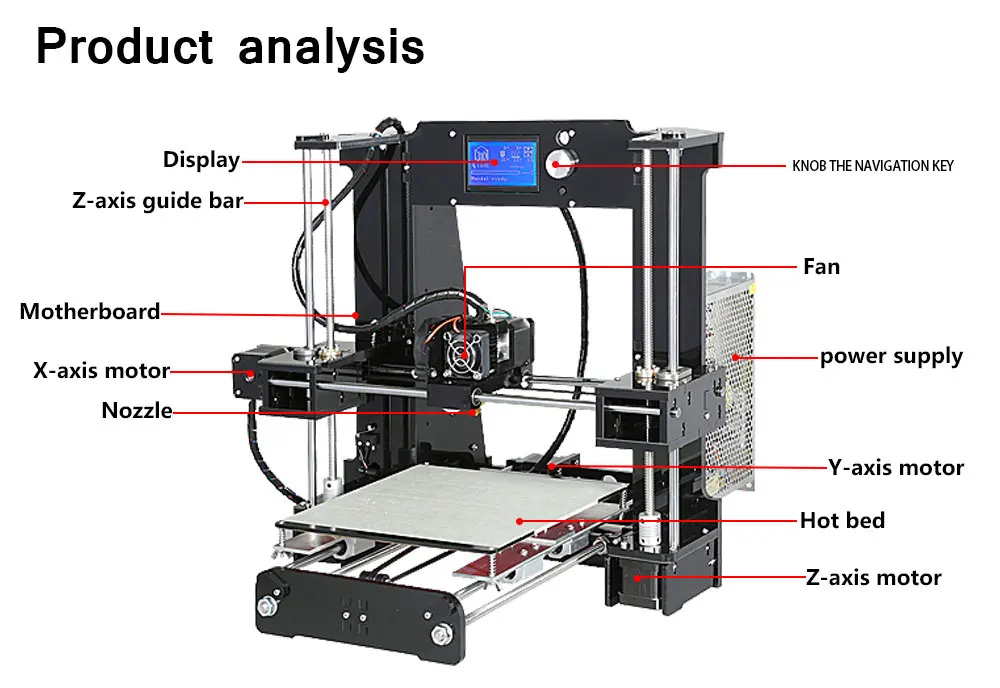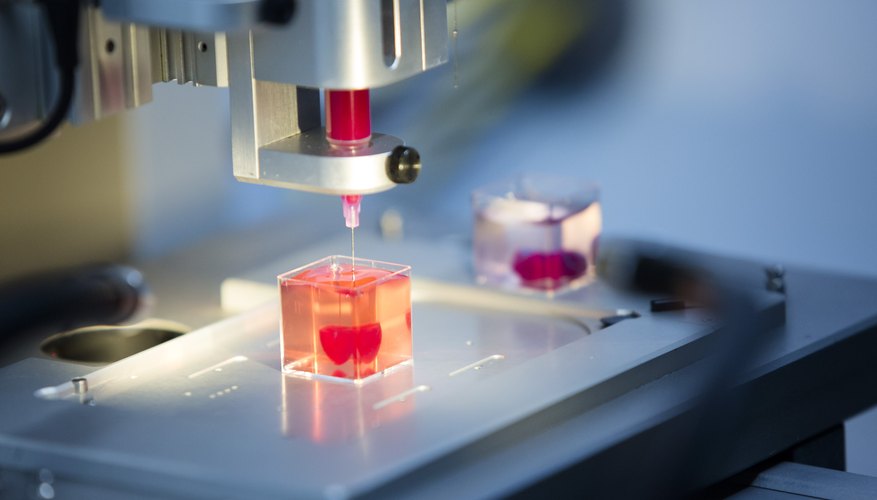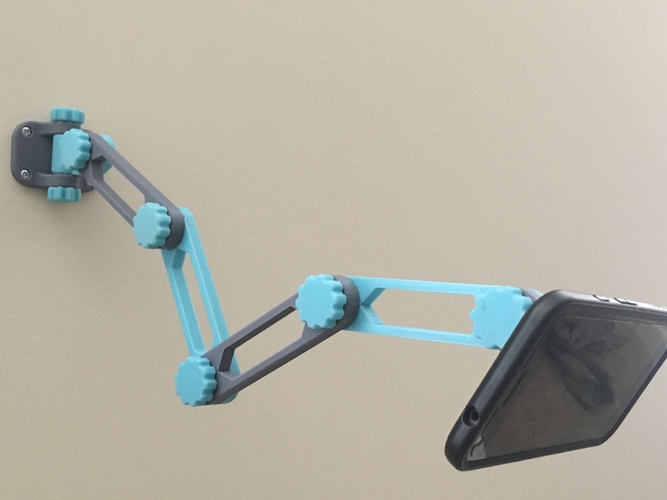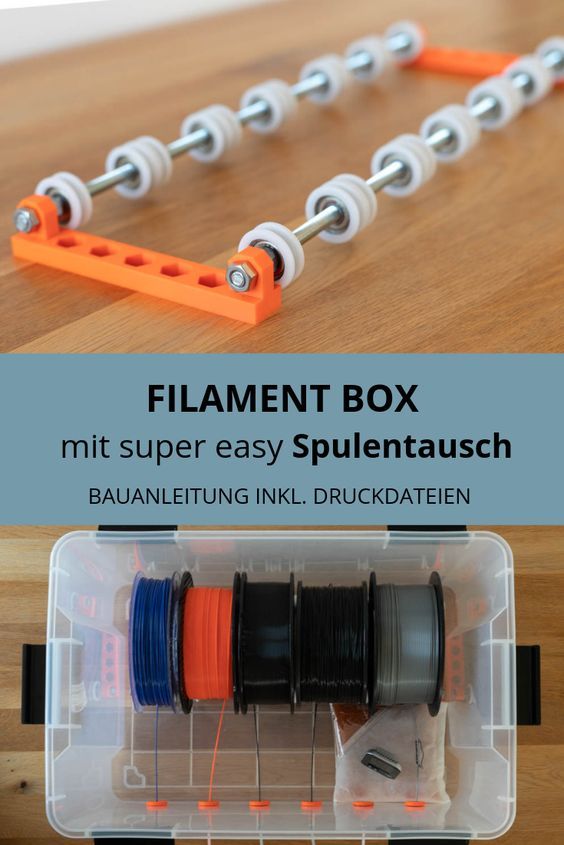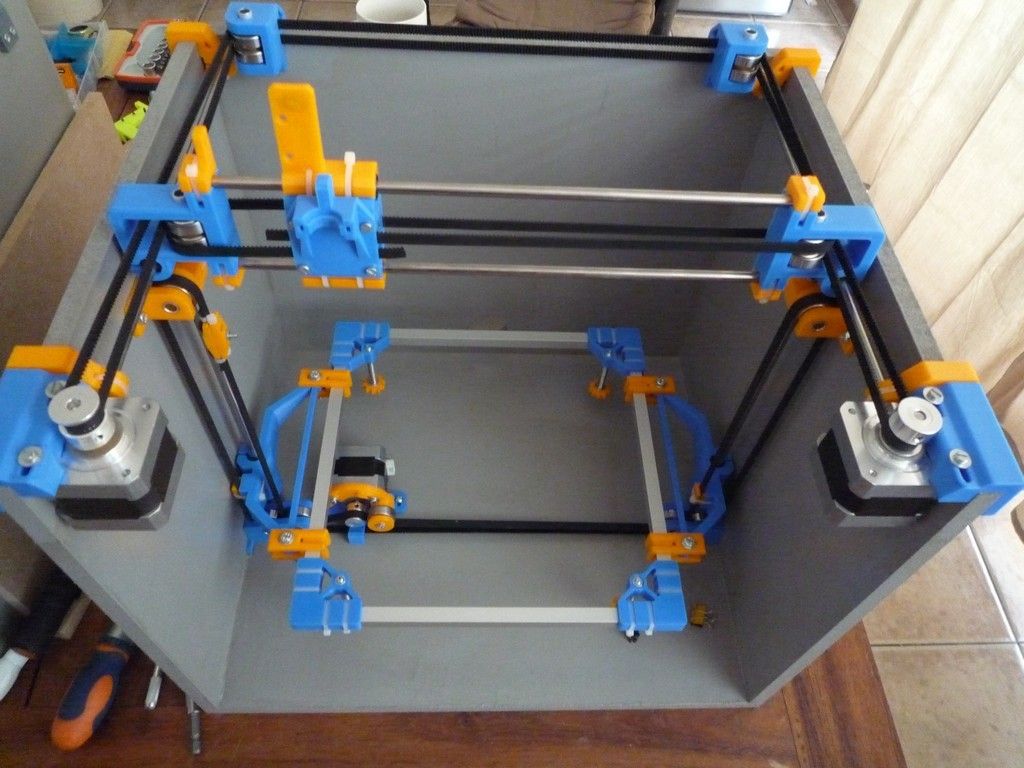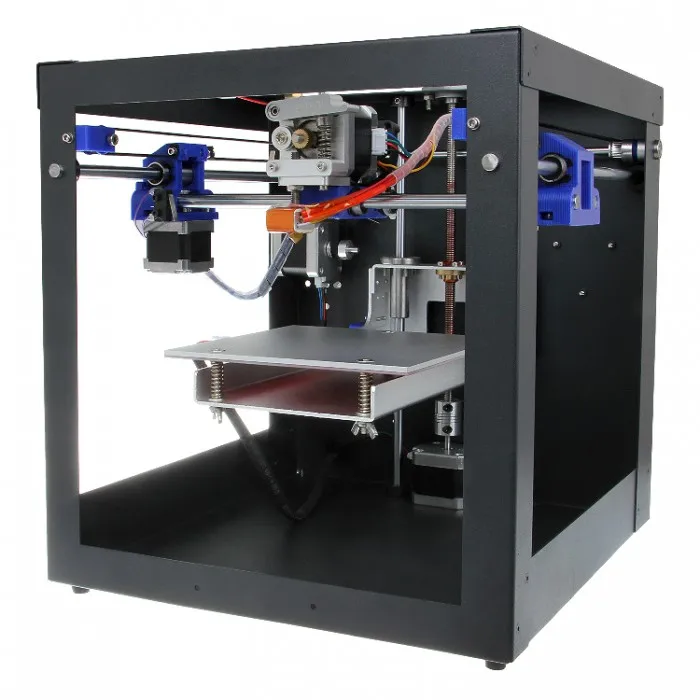Best 3d printer with auto bed leveling
Best 3D Printers with Auto Leveling
3D printers are complex machines, with all the parts having to work coherently to provide high-quality results. So, precise adjustment of the distance between the print nozzle and the build plate is extremely important, unless you want your prints to be ruined by poor first layer adhesion.
This is Top 3D Shop, and in this article, we will touch upon the feature of automatic bed leveling, as well as look at some of the best 3D printers offering this function.
How does auto bed leveling work?
Manual print bed leveling can be pretty tiresome and time-consuming, especially for those who are new to 3D printing. Besides, the process should be repeated after a few prints, as the bed’s position can slightly change. Fortunately, a lot of 3D printers today, including entry-level consumer models, come with an automated bed leveling function that makes the process easy and quick.
The auto bed leveling function implies using a built-in proximity sensor near the tip of the nozzle. When activated, the sensor measures the distance between the nozzle and the print bed at several points on the print bed. Based on these calculations, the firmware adjusts the position of the print head right on the go, to keep the even distance between the nozzle and the bed over the entire build area during printing.
If you want to learn more about this function, read our Auto Bed Leveling Guide.
Do you need a 3D printer with auto bed leveling?
In short — yes, auto bed leveling is worth its money, as it saves a lot of time, and allows the user to avoid print failures caused by a poorly leveled print bed.
Credit: instructables.com
On the other hand, if you are an experienced user, and you don’t mind spending time on manual bed leveling (and know pretty well how to do it properly), you can, probably, do without this useful feature.
If you are new to 3D printing, the auto bed leveling function will help you avoid such troubles, as poor first layer adhesion, nozzle clogging caused by too close position of the nozzle to the print bed, or scratching the print bed.
Can you upgrade a 3D printer to employ auto leveling?
If your 3D printer is not equipped with this function, you can upgrade it with an optional auto bed leveling (ABL) sensor available in the market.
There are various types of ABL sensors, the BLTouch being the most popular. It’s a mechanical sensor, consisting of a microcontroller, a Hall sensor, a magnetic switch, and a pin probe used for measuring the distance between the nozzle and the print bed. Since the sensor uses physical contact for calculating the distance, there are no restrictions for the print bed material. You are free to use the BLTouch sensor with glass, metal, or any other print bed type. The sensor is mounted near the nozzle tip and connected to the motherboard. When the pin touches the print surface, it immediately retracts, causing changes in the electromagnetic field and triggering the magnetic switch. In such a way the sensor checks several points on the print bed, and its position is calculated from the values obtained.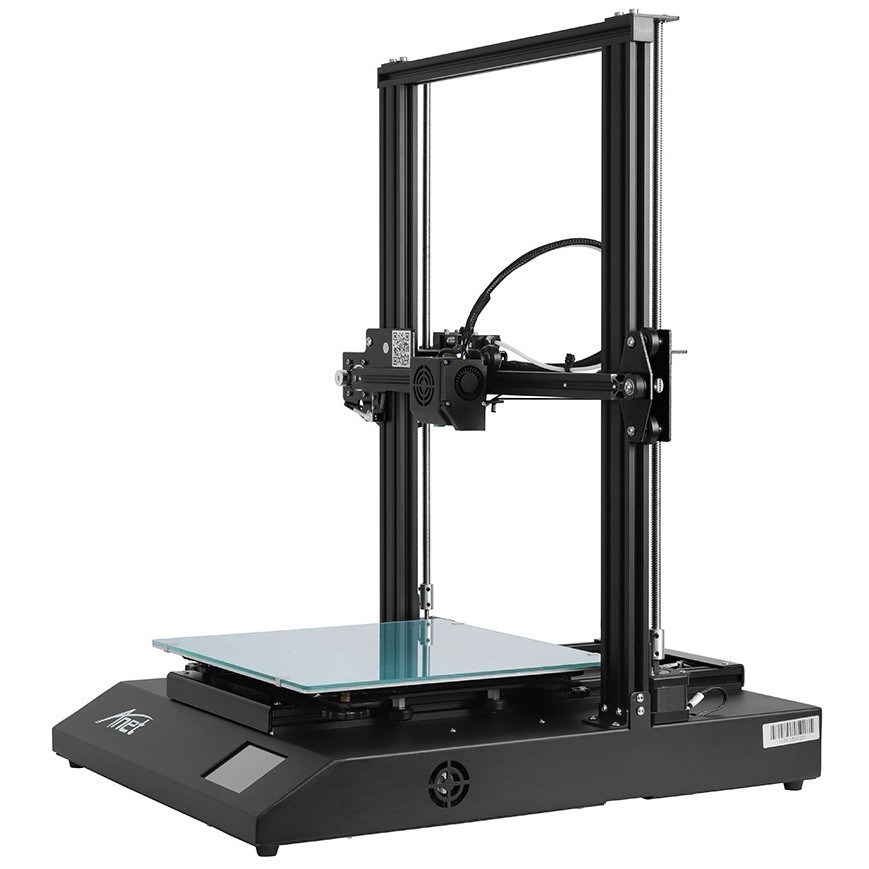 It’s important that your print bed is absolutely clean when using BLTouch, as any material residues, for example, may lead to inaccurate calculations.
It’s important that your print bed is absolutely clean when using BLTouch, as any material residues, for example, may lead to inaccurate calculations.
The BLTouch sensor can be used with most of the 3D printers in the market, but it is recommended to check your printer compatibility just to make sure.
Best budget 3D printers with auto bed leveling
Artillery Genius Pro
The Artillery Genius Pro is a compact FDM 3D printer featuring the build volume of 220 x 220 x 250 mm and the Titan direct drive extruder with a 0.4 mm Volcano nozzle, that enables uniform filament extrusion and provides decent print quality with the minimum layer height of 100 microns. The extruder of the Genius Pro, unlike the original Genius model, is equipped with a touch sensor enabling the auto bed leveling function. The maximum nozzle temperature is 240 °C. The print bed, made of tempered glass, can heat up to 120 °C in 3 minutes. The printer is compatible with PLA, ABS, wood composites, PVA, HIPS, and flexible materials. The filament runout sensor and the resume printing function prevent possible print failures. The Genius Pro is compatible with Cura, Simplify3D, and Slic3r software and is operated via a 2.8" color touchscreen. The device comes as a kit, requiring self-assembly.
The filament runout sensor and the resume printing function prevent possible print failures. The Genius Pro is compatible with Cura, Simplify3D, and Slic3r software and is operated via a 2.8" color touchscreen. The device comes as a kit, requiring self-assembly.
Credit: reddit.com
Pros
- Auto bed leveling
- Low-noise printing due to quiet stepper-drivers
- Heated build plate
- Filament runout sensor
- Resume printing function
- Wide materials compatibility
Cons
- Lack of enclosure
- No wireless connection
- Needs self-assembly
Creality Ender-3 S1 Pro
The Ender-3 S1 Pro is a compact FDM 3D printer capable of working with high-temp materials, like Nylon and Polycarbonate, alongside other popular filaments, such as PLA, ABS, wood composites, TPU, and PETG. The full-metal dual-gear direct extruder is equipped with a brass nozzle that can reach the temperature of 300 °C.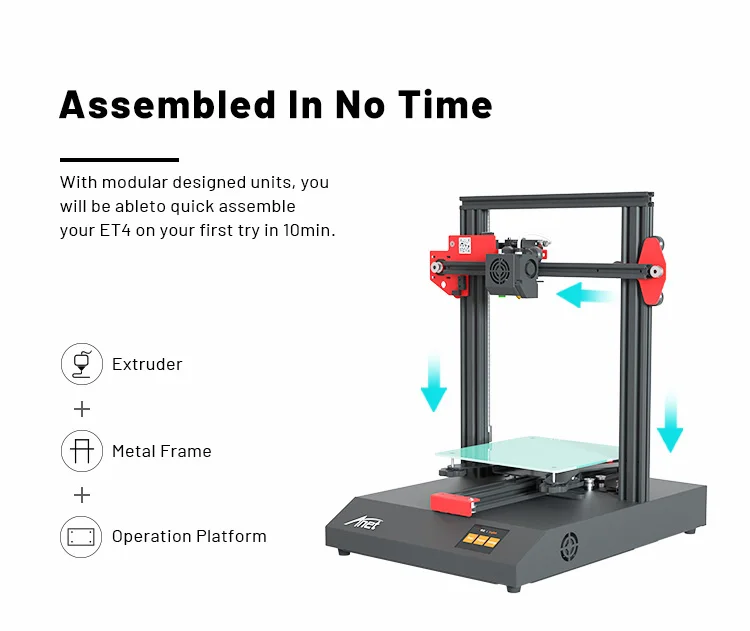 The PEI-coated flexible magnetic build plate, made of spring steel, ensures proper first layer adhesion and easy removal of the printed part. The printer has a build volume of 220 x 220 x 270 mm and provides the minimum layer height of 50 microns, which is good for an entry-level FDM machine. The auto bed leveling function uses CR Touch probe to measure 16 points on the print bed and adjust the print head. The machine also features the filament runout sensor and resume printing function.
The PEI-coated flexible magnetic build plate, made of spring steel, ensures proper first layer adhesion and easy removal of the printed part. The printer has a build volume of 220 x 220 x 270 mm and provides the minimum layer height of 50 microns, which is good for an entry-level FDM machine. The auto bed leveling function uses CR Touch probe to measure 16 points on the print bed and adjust the print head. The machine also features the filament runout sensor and resume printing function.
Credit: thetechnologyman.com
Pros
- Auto bed leveling
- High-temperature materials compatibility
- Heated print bed
- Decent print quality
- Flexible magnetic build plate
Cons
- No enclosure
Anycubic Vyper
The Anycubic Vyper is another entry-level FDM printer that comes semi-assembled and features a modular design, allowing for easy upgrades. Like all the models in our list, the Vyper sports the auto bed leveling system, which uses a pressure sensor, activated when the nozzle hits the print bed, providing 16-points precise bed leveling. The build volume of 245 x 245 x 260 mm is quite decent for a compact desktop device. The printer is equipped with a dual-gear extrusion system with two cooling fans that allow printing with PLA-like materials. The maximum nozzle temperature is 260 °C. The heated spring steel magnetic build plate with a scratch-resistant coating ensures good adhesion and easy removal of the prints. The Anycubic Vyper is operated via a 4.3" touchscreen; the recommended software is Cura slicer.
The build volume of 245 x 245 x 260 mm is quite decent for a compact desktop device. The printer is equipped with a dual-gear extrusion system with two cooling fans that allow printing with PLA-like materials. The maximum nozzle temperature is 260 °C. The heated spring steel magnetic build plate with a scratch-resistant coating ensures good adhesion and easy removal of the prints. The Anycubic Vyper is operated via a 4.3" touchscreen; the recommended software is Cura slicer.
Credit: 3dprintingmedia.network
Pros
- Auto bed leveling
- Decent build volume
- Heated print bed
- Easy operation
- Modular design for easy upgrades
Cons
- No enclosure
Best mid-range 3D printers with auto bed leveling
FlashForge Guider 2
The FlashForge Guider 2 is an FDM 3D printer featuring professional-grade quality, yet affordable price. The Guider 2 has the auto bed leveling function but, unlike the other printers in this article, it’s an assisted automatic process. That means the printer gives the user instructions during the calibration process, rather than automatically adjusts the position of the print head while printing. A removable heated print bed and an enclosed build chamber allow printing with ABS-like filaments. The device features a spacious build volume of 280 x 250 x 300 mm. The filament runout sensor and resume printing function stand for the reliability of the printing process. The printer comes with the FlashPrint proprietary slicer.
That means the printer gives the user instructions during the calibration process, rather than automatically adjusts the position of the print head while printing. A removable heated print bed and an enclosed build chamber allow printing with ABS-like filaments. The device features a spacious build volume of 280 x 250 x 300 mm. The filament runout sensor and resume printing function stand for the reliability of the printing process. The printer comes with the FlashPrint proprietary slicer.
Credit: @matisboerodisign / instagram
Pros
- Affordable price
- High quality of printing
- Wide range of compatible materials
- Removable heated print bed
- Resume printing function
- Filament runout sensor
Cons
- The printer is quite heavy
- The prints are difficult to remove from the bed
Creality CR-5 Pro HT
Due to the maximum nozzle temperature of 300 °C and the fully-enclosed build chamber, the Creality CR-5 Pro High-Temp version can print with high-temperature materials, like PLA, TPU, ABS, and others.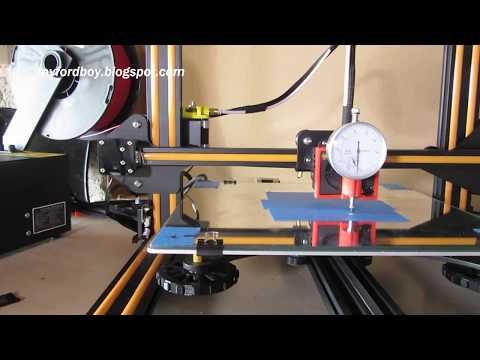 The carbon glass-coated print bed can heat up to 110 °C and features a BLTouch auto leveling function. The build chamber dimensions of 300 x 225 x 380 mm allow printing large models or multiple smaller parts at a time. Consistent failure-proof printing is provided by the filament runout sensor, resume printing function, and cloud printing support. The CR-5 Pro HT can be operated via a 4.3" touchscreen, or remotely with the Creality Cloud application.
The carbon glass-coated print bed can heat up to 110 °C and features a BLTouch auto leveling function. The build chamber dimensions of 300 x 225 x 380 mm allow printing large models or multiple smaller parts at a time. Consistent failure-proof printing is provided by the filament runout sensor, resume printing function, and cloud printing support. The CR-5 Pro HT can be operated via a 4.3" touchscreen, or remotely with the Creality Cloud application.
Pros
- Auto bed leveling
- Large build volume
- Heated carbon glass-coated print bed
- Wide range of compatible materials, including high-temp filaments
- Cloud printing support
- Filament runout sensor
- Wide connectivity options
Cons
- 100 microns minimum layer height
Credit: @Just Vlad / youtube
Best professional 3D printers with auto bed leveling
Raise3D E2
The Raise3D E2 is a professional FDM 3D printer, boasting a great number of advanced functions that stand for industrial-grade quality and consistency of the printing process.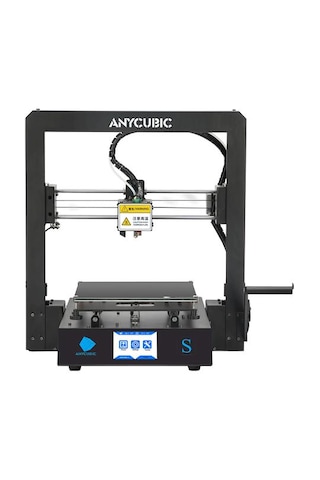 The device is equipped with the IDEX dual extrusion system with two independent extruders, that allow printing the same model in mirror or duplication mode, or printing dual color or dual material parts. The maximum nozzle temperature of 300 °C gives the possibility to print with a great number of filaments, like PLA, ABS, HIPS, PC, TPU, TPE, NYLON, PETG, ASA, PP, PVA, carbon and glass-filled, and others.The standard 0.4 mm nozzle can be replaced with optional 0.2–1.0 mm nozzles, if needed. The printer sports an automatic multi-zone bed leveling system with a BLTouch sensor. Other smart features include a built-in camera and a filament runout sensor.
The device is equipped with the IDEX dual extrusion system with two independent extruders, that allow printing the same model in mirror or duplication mode, or printing dual color or dual material parts. The maximum nozzle temperature of 300 °C gives the possibility to print with a great number of filaments, like PLA, ABS, HIPS, PC, TPU, TPE, NYLON, PETG, ASA, PP, PVA, carbon and glass-filled, and others.The standard 0.4 mm nozzle can be replaced with optional 0.2–1.0 mm nozzles, if needed. The printer sports an automatic multi-zone bed leveling system with a BLTouch sensor. Other smart features include a built-in camera and a filament runout sensor.
Credit: @3deltaworkshop / Instagram
Pros
- Auto bed leveling
- IDEX dual extrusion system
- 20 microns minimum layer height
- Built-in camera
- Wide material compatibility
- Enclosed chamber with a HEPA filter
- Door opening detection
Cons
- Auto bed leveling takes quite a while
Raise3D Pro3
The Raise3D Pro 3 professional FDM 3D printer features a sizable build volume of 300 x 300 x 300 mm. The bed auto leveling function ensures a perfectly even print area which improves the first layer adhesion, and the flexible steel build plate makes for the convenient removal of the printed parts. The Pro 3 is a dual extrusion system with two independent extruders and interchangeable nozzles with available diameters of 0.2–1.0 mm. The printer is an open-material system, allowing for the use of third-party materials alongside the proprietary filaments. A set of smart features, like built-in camera and door opening detection, provide a smooth printing experience.
The bed auto leveling function ensures a perfectly even print area which improves the first layer adhesion, and the flexible steel build plate makes for the convenient removal of the printed parts. The Pro 3 is a dual extrusion system with two independent extruders and interchangeable nozzles with available diameters of 0.2–1.0 mm. The printer is an open-material system, allowing for the use of third-party materials alongside the proprietary filaments. A set of smart features, like built-in camera and door opening detection, provide a smooth printing experience.
Credit: @okada_ss / Instagram
Pros
- Auto bed leveling
- 10 mm minimum layer height
- High print quality
- Dual extrusion system
- Large build volume
- HEPA air filter
- Wide range of compatible materials
Cons
- Requires nozzle upgrades for printing with carbon fiber
Fusion3 Edge
The Fusion3 EDGE is a fast professional FDM 3D printer with a large build volume of 368 x 368 x 343 mm and the minimum layer height of 20 microns. Due to the proprietary ANVIL print head with the maximum temperature of 320 °C, and wear-resistant surgical steel print tubes, the EDGE can print with high-temp and abrasive materials. The printer is equipped with a 1/4" aluminum print bed with standard glass surface and can be upgraded with an optional magnetic build plate. The flat surface combined with the mesh probe bed leveling system ensure perfect first layer adhesion. The multi-zone print bed can heat up to 145 °C, and the temperature in the passively heated build chamber reaches 70 °C.
Due to the proprietary ANVIL print head with the maximum temperature of 320 °C, and wear-resistant surgical steel print tubes, the EDGE can print with high-temp and abrasive materials. The printer is equipped with a 1/4" aluminum print bed with standard glass surface and can be upgraded with an optional magnetic build plate. The flat surface combined with the mesh probe bed leveling system ensure perfect first layer adhesion. The multi-zone print bed can heat up to 145 °C, and the temperature in the passively heated build chamber reaches 70 °C.
Pros
- Precise auto bed leveling system
- Extremely high print speed
- Exceptional print quality
- Fully enclosed heated build chamber
- Heated print bed
- Wide range of compatible filaments, including third-party materials
- Affordable price
Cons
- Bowden extruder (may require upgrades and profile management when working with flexible materials)
Best large-format 3D printers with auto bed leveling
Modix Big 60 V3
The Modix Big 60 V3 is an affordable large-format FDM 3D printer.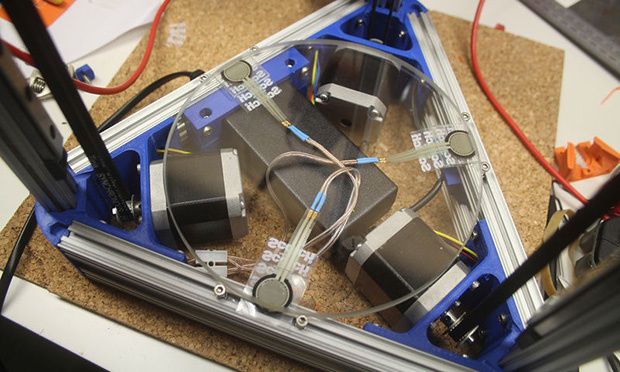 Like all the Modix printers, the Big 60 V3 comes as an assembly kit and features modular design allowing for easy upgrades. The V3 version is based on the previous Big 60 V2 model; the improvements include a 10% larger build volume of 600 x 600 x 660 mm and the new Duet 2 powerful controller unit, which offers a lot of enhancements, like Wi-Fi connectivity, remote control option, or dual extrusion support on the main board (and up to five more extruders on the optional expansion board). The automatic bed leveling function, using BLTouch probe with 100 points probing mesh, is activated before each print. The machine is capable of working with high-temp materials, and can print at 40-micron minimum layer height, providing industrial-grade print quality and consistency.
Like all the Modix printers, the Big 60 V3 comes as an assembly kit and features modular design allowing for easy upgrades. The V3 version is based on the previous Big 60 V2 model; the improvements include a 10% larger build volume of 600 x 600 x 660 mm and the new Duet 2 powerful controller unit, which offers a lot of enhancements, like Wi-Fi connectivity, remote control option, or dual extrusion support on the main board (and up to five more extruders on the optional expansion board). The automatic bed leveling function, using BLTouch probe with 100 points probing mesh, is activated before each print. The machine is capable of working with high-temp materials, and can print at 40-micron minimum layer height, providing industrial-grade print quality and consistency.
Credit: @hwangjoonha_ / Instagram
Pros
- Auto bed leveling
- Modular design allowing for easy upgrades
- Large build volume
- Industrial-grade print quality and speed
- Wide range of compatible materials
- 7" operating touchscreen
- Affordable price
Cons
- Self-assembly is time-consuming
- Many features, like an enclosure, come as an option only
Modix Big 120X V3
The Modix Big 120X V3 is another large FDM printer from the BIG family, featuring an impressive build volume of 1,200 x 600 x 640 mm, which allows you to print parts of almost any size.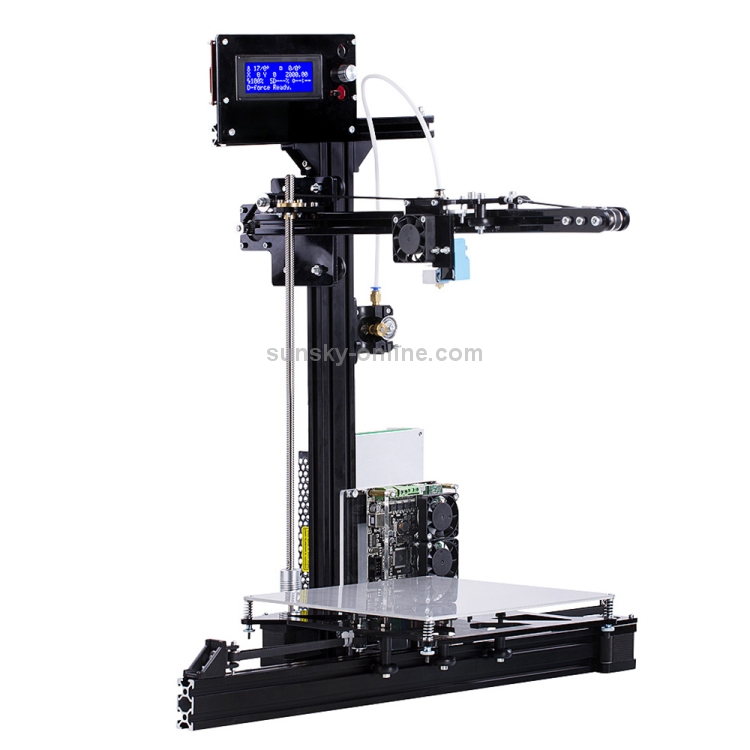 The machine is a self-assembly kit with the same open modular structure, as the other Modix Big printers. The enclosure comes as an option and should be bought separately. The Big 120X V3 is equipped with the new Griffin print head with the maximum hotend temperature of 285 °C, which can be further converted to 500 °C. The aluminum heated build plate features auto leveling function with the 200-point probing mesh. Modix offers a variety of components you can buy in addition to the basic package, like DUEX expansion board, E3D V6 and Super Volcano hotends, a magnetic print bed, and more.
The machine is a self-assembly kit with the same open modular structure, as the other Modix Big printers. The enclosure comes as an option and should be bought separately. The Big 120X V3 is equipped with the new Griffin print head with the maximum hotend temperature of 285 °C, which can be further converted to 500 °C. The aluminum heated build plate features auto leveling function with the 200-point probing mesh. Modix offers a variety of components you can buy in addition to the basic package, like DUEX expansion board, E3D V6 and Super Volcano hotends, a magnetic print bed, and more.
Credit: @rebeca_gi_sa / Instagram
Pros
- Auto bed leveling
- Huge build volume
- Modular system
- Heated print bed
- Wide range of compatible filaments
- Compatibility with any slicing software
Cons
- Enclosure should be bought separately
- Takes a lot of time to assemble
Creatbot D600 Pro
The Creatbot D600 Pro is a large-scale FDM 3D printer featuring a build volume of 600 x 600 x 600 mm and a dual extrusion system with the maximum nozzle temperature of 420 °C.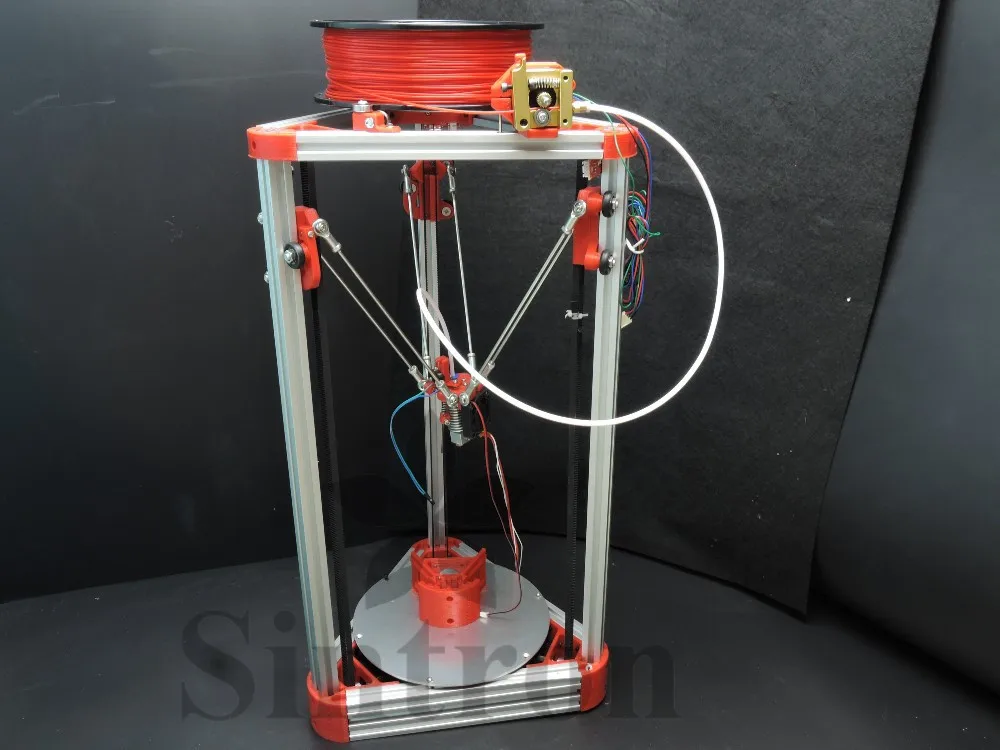 Combined with the heated ceramic-glass print bed and the hot air chamber, maintaining the constant temperature of up to 70 °C, this allows the D600 Pro to print with high-performance materials, like high-temp nylons, carbon fiber-filled thermoplastics and PC. The precise auto bed leveling system using BLTouch sensor greatly adds to print quality, ensuring proper first layer adhesion. The printer comes with free CreatWare software based on the popular Cura slicer.
Combined with the heated ceramic-glass print bed and the hot air chamber, maintaining the constant temperature of up to 70 °C, this allows the D600 Pro to print with high-performance materials, like high-temp nylons, carbon fiber-filled thermoplastics and PC. The precise auto bed leveling system using BLTouch sensor greatly adds to print quality, ensuring proper first layer adhesion. The printer comes with free CreatWare software based on the popular Cura slicer.
Credit: @3dprimade / Instagram
Pros
- Auto bed leveling
- Huge build volume
- Heated build chamber
- Printing with engineering-grade materials
- Filament drying room
Cons
- Small build chamber door
6 Affordable Auto Leveling 3D Printers To Save You Time & Hassle
Manual leveling is tedious, repetitive, and exposes you to the more underrated component of failed prints — human error. Wouldn’t it be great to automate all the boring stuff away, and get to printing? It’s good news for you then, as auto-leveling 3D printers have become more and more affordable.
BUDGET PICK
Anycubic Kobra
One of the cheapest self-leveling printers around.
Performed well in our review.
Available At anycubic here amazon here
MID-RANGE PICK
Creality Ender 3 S1
Builds on Ender 3’s success with extra power and auto-leveling
Improved direct drive extruder
Available at creality here amazon here
PREMIUM PICK
Prusa i3 MK3S+
One of the best 3D printers for $1000 with great auto-leveling
Durable, accurate, it’s perfect
Available at prusa here
What is an auto-leveling 3D printer?
An auto-leveling 3D printer is one that comes equipped with the necessary kit (sensors) to automatically detect the distance between the nozzle and the print bed.
Prior to auto-leveling, makers worldwide had to manually adjust their 3D printer’s bed so it was at the correct distance away from the nozzle.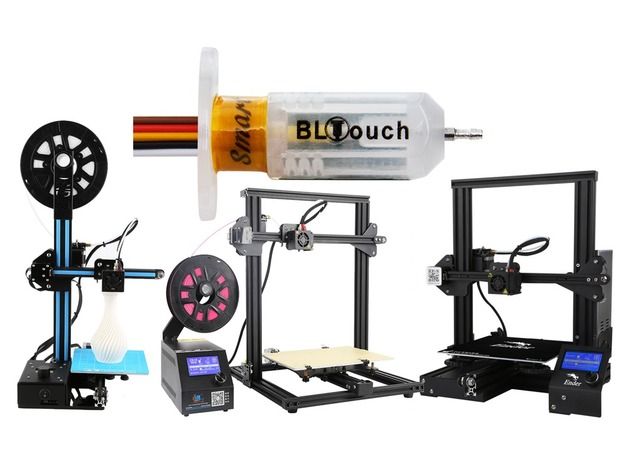 This was time-consuming, annoying, and put beginners off. Moreover, you’d have to re-level your 3D printer every few prints as the bed began to fall out of alignment over time.
This was time-consuming, annoying, and put beginners off. Moreover, you’d have to re-level your 3D printer every few prints as the bed began to fall out of alignment over time.
Having a self-leveling 3D printer saves you time and hassle, so you can get to doing the fun things like printing your favorite models.
These auto-leveling printers have proximity sensors near the tip of the nozzle and detect where the print bed is across various points on the print bed. For example, the Creality CR-10 Smart has 16 points spaced evenly across the print bed that the nozzle probes to get distance data.
With this data, the 3D printer’s firmware can make adjustments on the distance the nozzle comes to the print bed during the 3D printing process.
For example, if one side of the print bed is slightly uneven, the printer adjusts to this and ensures that the nozzle and bed remain the same distance apart throughout the print, improving bed adhesion and print quality.
Generally, the ideal distance between the printer nozzle and bed is around 0.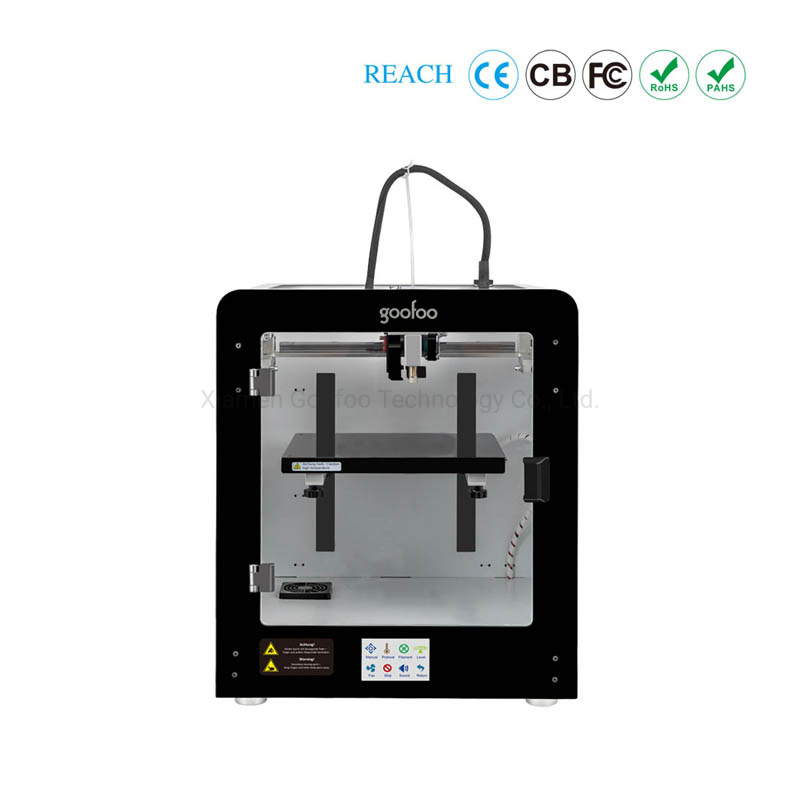 1mm, but this can vary.
1mm, but this can vary.
Problems that can occur if the nozzle is too close to the print bed include:
- Scratch marks on the print bed
- Filament will be unable to extrude, especially in the first few layers
- Can clog your nozzle
Problems that can occur if the nozzle is too far away from the print bed include:
- Bad adhesion
- Filament will curve and twist around the nozzle rather than being deposited
- Poor print quality
Either way, badly optimized bed leveling causes bad adhesion and worse print quality, so it’s key to do this properly. Even with an auto-leveling 3D printer, it can be worth manually calibrating everything every once in a while to ensure your settings are spot on.
What are the advantages of a 3D printer with automatic bed leveling?
- Better print quality and bed adhesion
- More accessible for less experienced beginners
- Saves you time and hassle manually leveling the 3D printer
- Human error can affect manual leveling
Therefore, a level print bed is crucial for high-quality prints.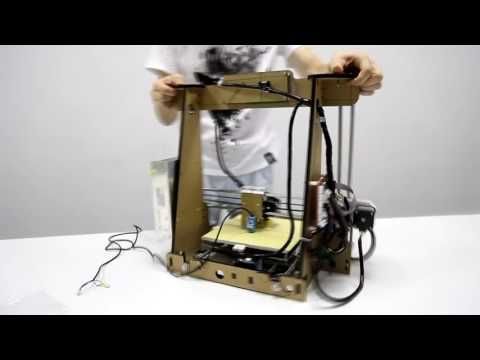 If you’re trying to avoid constantly ruined, sloppy-looking prints caused by poor layer adhesion, go for a self-leveling 3D printer.
If you’re trying to avoid constantly ruined, sloppy-looking prints caused by poor layer adhesion, go for a self-leveling 3D printer.
Can you upgrade a 3D printer to auto level?
Yes, you can, and many makers opt to upgrade their printer so that it can auto level. Many 3D printer auto-leveling kits are available, but check the kit you’re interested in is compatible with your printer.
Some popular 3D printer auto-leveling kits include:
- BLTouch — kits Available on Amazon here
- CRTouch — Creality’s version — Available at Creality here / Amazon here
- EZABL
These kits come with firmware, such as Marlin, which when placed where your printer’s z-stop is, learns the height of the build plate, and makes adjustments based on these measurements.
Top Picks
Best Self Leveling 3D Printers – Full Round-Up
- Anycubic Kobra: Best budget pick
- Flashforge Adventurer 3 Lite: Best enclosed low-cost option
- Anycubic Vyper: Similar to Kobra but slightly upgraded (but costs extra)
- Ender 3 S1: Best auto-leveling 3D printer under $500
- Prusa i3 MK3S+: Best for $1,000
- Ultimaker S3: Best for professional use, or if budget is no issue for you
3DSourced is reader-supported.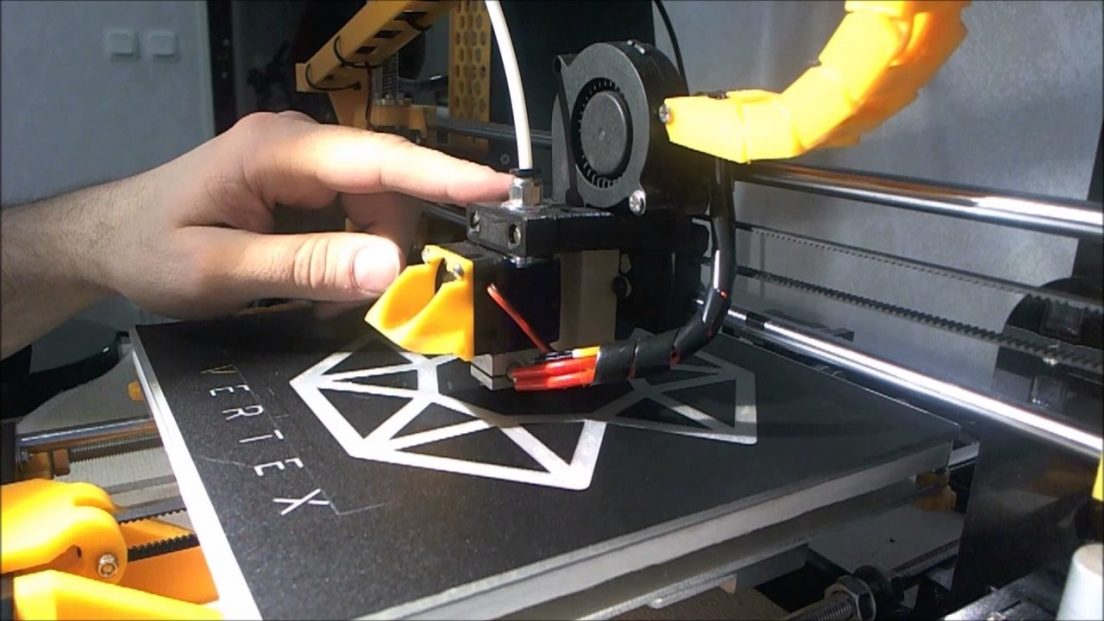 When you buy through links on our site, we may earn an affiliate commission. Learn more
When you buy through links on our site, we may earn an affiliate commission. Learn more
The Best Auto-Leveling 3D Printers
Anycubic Kobra – cheapest auto-leveling 3D printer
- Price — Check latest price at Anycubic here / Amazon here
- Automatic Bed Leveling: Anycubic LeviQ
- Leveling Points: 25 points
- Build Volume: 220 x 220 x 250 mm
- Minimum Layer Height: 50 microns
The Anycubic Kobra is the cheapest 3D printer with a self-leveling bed around and a thrifty way to get all the time-saving benefits at a price that won’t scare away 3D printing novices. Launched in early 2022, it’s a machine designed to make 3D printing easier for newcomers by removing the more hands-on aspect of setup and tinkering.
Anycubic has equipped the Kobra with its in-house developed mesh point ABL 3D printing system, the LeviQ. It measures the bed at 25 distinct points, stores the data, and adapts the printing process to mitigate surface inconsistencies.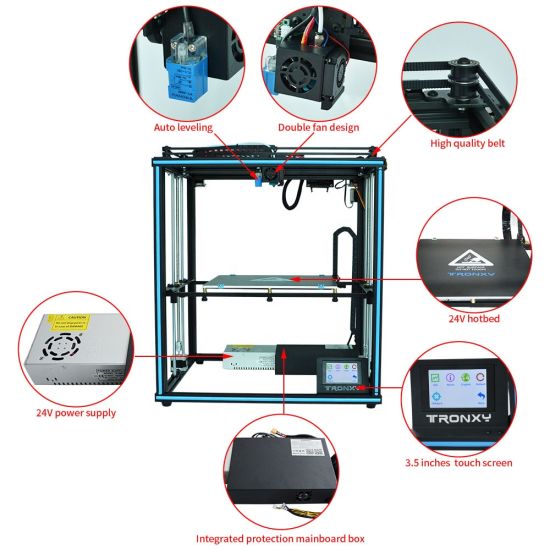
We had the chance to spend some quality time with the Kobra, and we couldn’t have been more impressed with the Levi Q system. The probe automatically levels the bed in just a few minutes with a single click. You can also fine-tune Z offset on the fly to get those flawless layers, thanks to an easily accessible setting in the intuitive display UI.
Elsewhere, the Anycubic Kobra has features we’ve rarely seen at this price. There’s a smart direct drive extruder, Anycubic excellent coarse PEI-coated removable magnetic bed, and a well-sized 220 x 220 x 250 mm build volume, all housed in a compact machine that won’t take up too much space.
Specifications are one thing, but the Anycubic backs them up with solid quality prints out-of-the-box. As with most budget printers, there’s some software tinkering involved to get the very best results, but once there, the Anycubic positively sings when fed PLA, TPU, and PETG.
In many ways, the Anycubic Kobra has redefined what we should expect from low-cost printers and, for our money, is hands down the best 3D printer under $300 currently on the market.
Flashforge Adventurer 3 Lite
- Price: $339 — Available at Flashforge Official store here / Available on Amazon here
- Build volume: 150 x 150 x 150
If you’ve got younger kids that you want to get involved in 3D printing, the Adventurer 3 Lite is perfect. It’s enclosed, so it keeps any curious child’s hands safely locked away from the nozzle while printing, with this enclosure also benefiting your prints as you can more effectively control the temperature, and reduce warping.
The Flashforge Adventurer 3 Lite is one of the cheapest 3D printers with auto-leveling, another feature that makes it ideal for beginners or kids, letting you skip all the hassle and get straight to the fun printing. The removable heated bed makes it easier to remove prints after printing, and despite its appeal as a basic, easy-to-use printer, it can still print tougher filaments like PETG.
It also comes with a filament run-out sensor, switching off automatically in the event of a power cut or similar failure, pausing your print so you can resume without ruining your model, and it’s very quiet, so it won’t disturb you too much if you’re working or relaxing in the same room.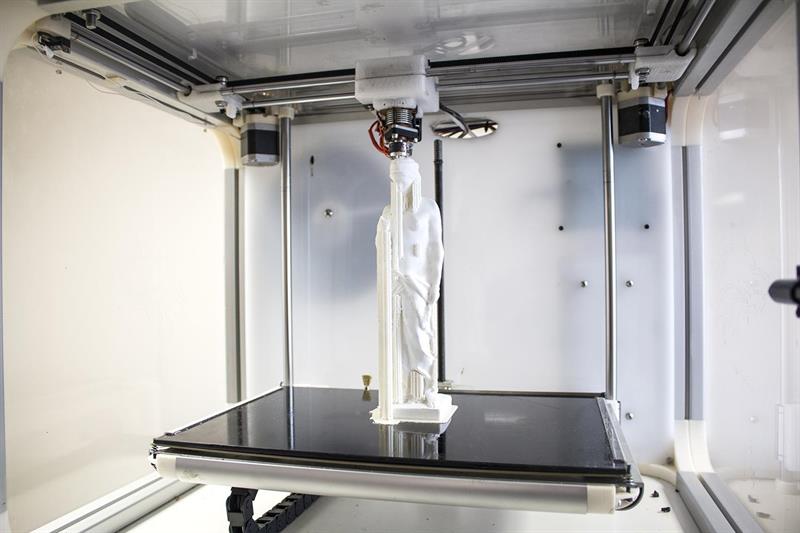
Anycubic Vyper
- Price: $429 — Available on Anycubic Store here / Available on Amazon here
- Build volume: 245 x 245 x 260 mm
Another low-priced self-leveling 3D printer, the Anycubic Vyper’s 1-click auto-leveling system automatically adjusts based on the data gained from each of 16 different points across the print bed to optimize printing.
Despite the large build volume, it’s a compact printer that doesn’t take up too much space, and when we recently tested it out we were impressed with the print quality. Though we didn’t run it too fast, Anycubic say that with the Vyper’s new fan cooling system you can print faster without a noticeable loss in print quality — at up to 100mm/s.
The new 32-bit motherboard and control chip makes it more powerful than previous Anycubic 3D printers, making for better precision and quieter printing. The large 4.3-inch touchscreen is a nice bonus, and the UI is easy to use to get printing and change each setting.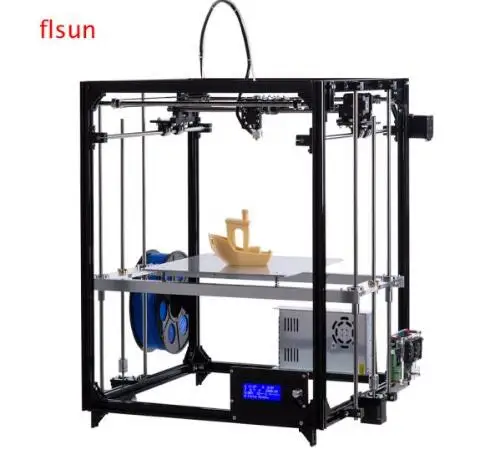 Another great feature is the new and improved double gear extrusion system within the extruder, making flexible filaments like TPU easier to print and prevents tangling, and also makes standard PLA printing more reliable.
Another great feature is the new and improved double gear extrusion system within the extruder, making flexible filaments like TPU easier to print and prevents tangling, and also makes standard PLA printing more reliable.
Overall, we were impressed when we tested the Anycubic Vyper, and if you’re looking for a high-quality 3D printer that auto levels for a good price, this could be the one for you.
You can read more in our full Anycubic Vyper test here.
Ender 3 S1 / S1 Pro
- Price — Check price at Creality store here / Amazon here
- Automatic Bed Leveling: Creality CR Touch Auto Leveling
- Leveling Points: 16 points
- Build Volume: 220 x 220 x 270 mm
- Minimum Layer Height: 50 microns
Emerging from one of the longest-running and best-selling 3D printing legacies, the Ender 3 S1 is the new, more sophisticated version of the Ender 3 – with two versions, the Ender 3 S1, and S1 Pro, with subtle differences.
In our review of the Ender 3 S1 Pro, we noted how Creality has gone to considerable lengths to make the printer a tinker-free, set-and-forget incredibly welcoming to beginners, and improved a number of key areas.
Both the Ender 3 S1 and S1 Pro have key upgrades, such as automatic bed leveling – a first for the Ender 3 family. Creality has used its self-developed BLTouch look-alike, the CR Touch.
It measures 16 points across the bed to provide the printer with all the data needed to compensate for different surface heights and deliver optimal printing. Unlike some automatic bed leveling systems, the CR Touch keeps its calibration sharp and trim even after multiple prints.
Of course, you could always buy an Ender 3 for dirt cheap and install a CR Touch yourself. It would be a viable option if it weren’t for the stacks of extra features found on the S1.
The Sprite dual-gear direct drive extruder is worth mentioning, as is the fantastic PC spring steel sheet, sleek LCD, extremely quiet 32-bit motherboard, and a larger 270mm maximum print height (vs 250mm on the Ender 3).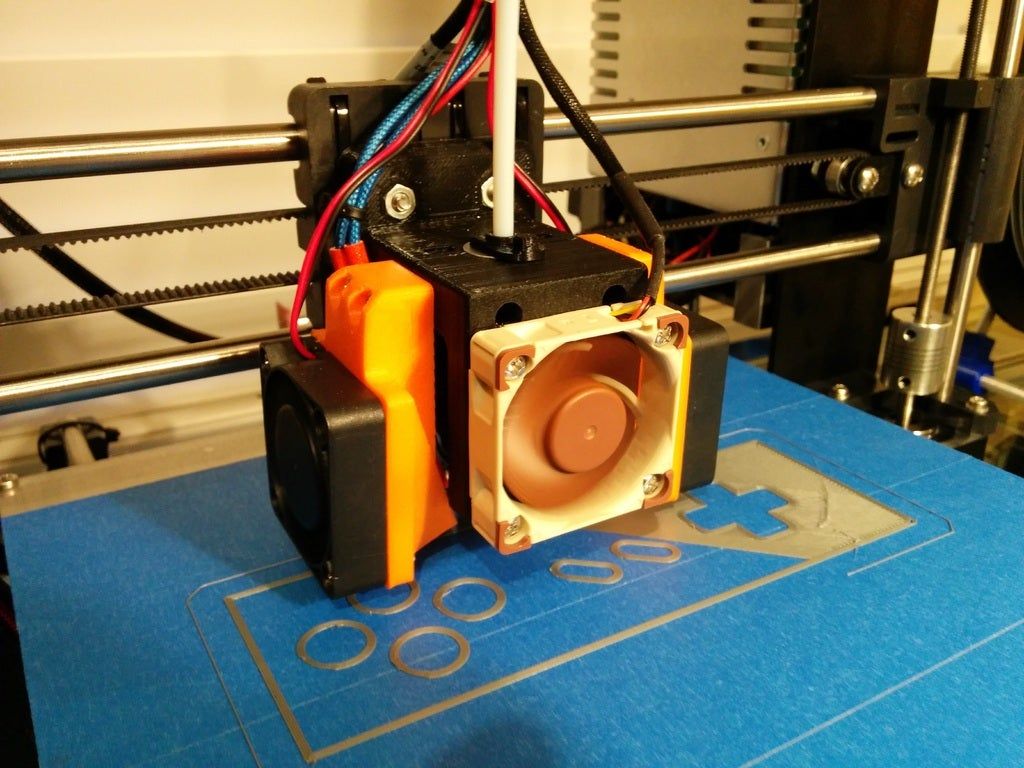
The Ender 3 S1 does cost more for all these upgrades, so whether the extra features are worth the additional spend comes down to budget and convenience. The Ender 3 is still one of the top budget picks, but you’ll have to invest time, effort, and money to spruce up to anything comparable to the Ender 3 S1.
And if you’re deciding between the S1 and S1 Pro for an auto-leveling 3D printer under $500, this really depends on what you want to print. The S1 Pro has an all-metal direct drive extruder that can reach 300°C, so if you want to print high-temp filaments like Nylon or PC, absolutely go for the S1 Pro. If not, you might be fine with the standard S1.
It’s also worth noting that the brand-new Ender 3 Neo range also now come with auto-bed leveling, so it’s more a question of whether you want the other upgrades on the S1 range.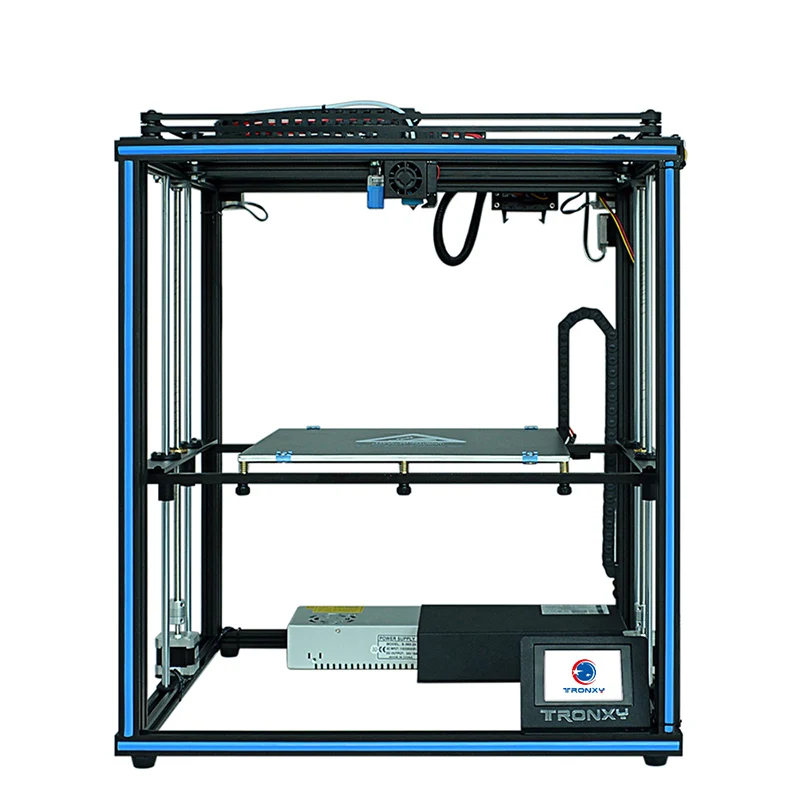
Prusa i3 MK3S+ — reliable auto-leveling 3D printer
- Price: $749 as a kit / $999 assembled — Available on Prusa Store here
- Build volume: 250 x 210 x 210 mm
Prusa printers have been known as the most reliable, hassle-free, and high-quality 3D printers around for years, winning boatloads of awards and selling hundreds of thousands of 3D printers.
The latest version, the i3 MK3S+, comes with improved first layer calibration via the new SuperPINDA probe, and a range of other key design improvements. The automatic mesh bed leveling is flawless and keeps everything optimized, and the print platform’s removable PEI spring steel sheets make it easy to remove your finished prints without having to strain and risk damaging your print while scraping it off the bed in an awkward position.
Other quality-of-life features include the filament runout sensor, power loss recovery to save where you are in your print, key safety features, and it’s very quiet while printing.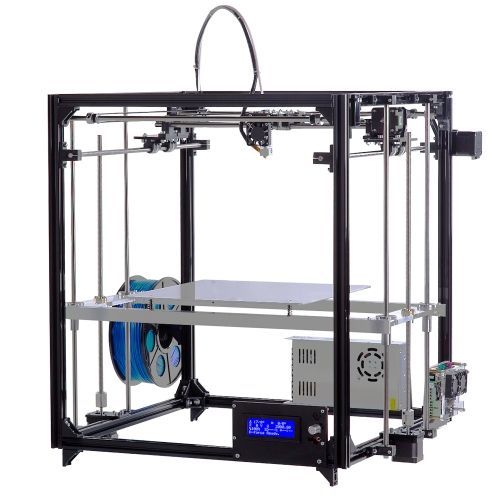
Prusa printers are also open source, so you can use third-party filaments, and the i3 MK3S+ is powerful enough and can reach high enough nozzle temperatures to print filaments like ASA, Polypropylene, Polycarbonate, HIPS, Nylon, and carbon filled filaments, beyond the standard ABS and PLA.
Overall, if you’ve got the extra money to spend, go for the Prusa and you won’t be disappointed.
Ultimaker S3 – premium auto-leveling option
- Price: $4,080 — Available on Dynamism here / Available on Matterhackers here
- Build volume: 230 x 190 x 200 mm
The premium, high-quality auto-leveling 3D printer option, the Ultimaker S3 guarantees a hassle-free printing experience. Designed for prototyping and for business use, the S3 features advanced auto bed leveling via automated calibration settings. These settings measure the build platform’s coordinates and automatically adjust without you needing to manually intervene — it’ll just stay level and optimized.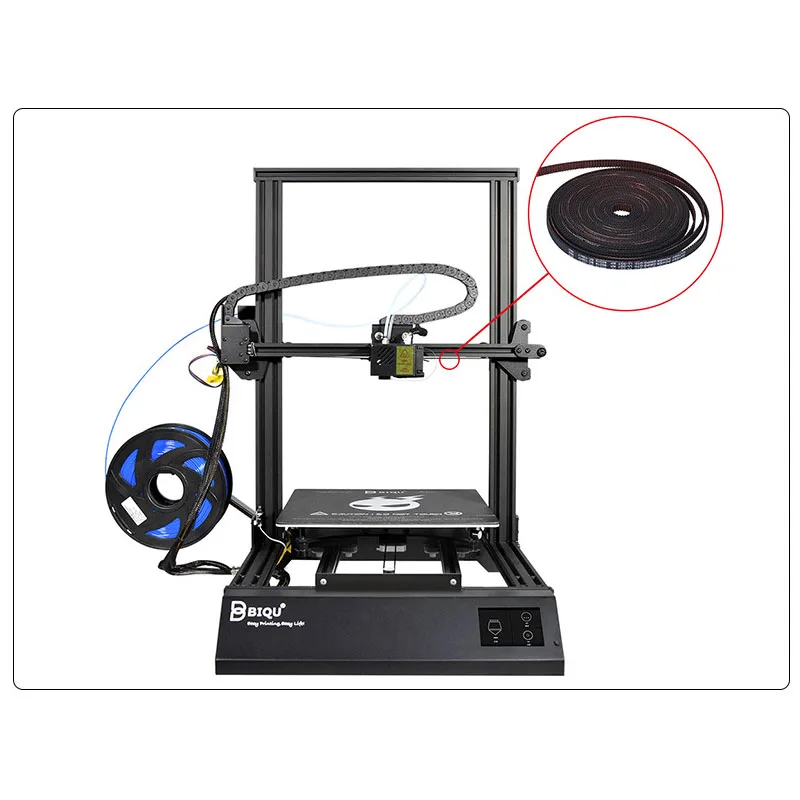
It’s also a dual extruder auto-leveling 3D printer, so you can print with PVA and PLA for dissolving filaments, as with HIPS and ABS, and a range of other filaments.
The Ultimaker S3 is also incredibly accurate, able to print precise parts of up to 20-micron resolutions. At this level of precision, it’ll be slow, but the results will be fantastic. It’s expensive and usually reserved for more professional use, but functions fantastically as an auto-leveling printer for a range of uses.
For premium machines, read our buyer’s guide for commercial 3D printers.
Do 3D Printers Need Auto Leveling?
No, 3D printers don’t strictly need auto bed leveling, but it’s a helpful feature to have because it removes the need to manually level the bed, which can be both time-consuming and frustrating for beginners.
FAQs
What is the best auto-leveling 3D printer?
The best cheapest auto-leveling 3D printers for ABL 3D printing include the Anycubic Kobra, Creality Ender 3 S1, and Flashforge Advenurer 3 Lite, but if you’re willing to spend a little more, the Prusa i3 MK3S+ is a fantastic self-leveling 3D printer.
What are the best self-leveling bed sensor kits?
The BLTouch auto-leveling sensor probe is a widely used and highly-rated self-leveling 3D printer kit, which is compatible with many different printers and brands. Creality also sell their own version, the CRTouch, and there are other options also.
Large Modix 3D printers
Modix Large 3D Printer is the
your best next 3D printer!
- Two-headed IDEX printing-novelty
- premium components
- Superficent design
- Multiple additions
- High resolution
- Self service
- Easy to upgrade
- Within your budget
- Compact package
are supplied as sets for independent assembly:
Modix Large 3D Printer is your next best 3D printer!
- Premium Components
- Heavy Duty
- Multiple Options
- High Resolution
Supplied as DIY kits:
- Manage your configuration
- Self service
- Easy to upgrade
- Within your budget
- Compact package
New generation 4 November 22
Modix is proud to announce the release of its new unified 3D printing platform called Generation 4 with IDEX dual head technology.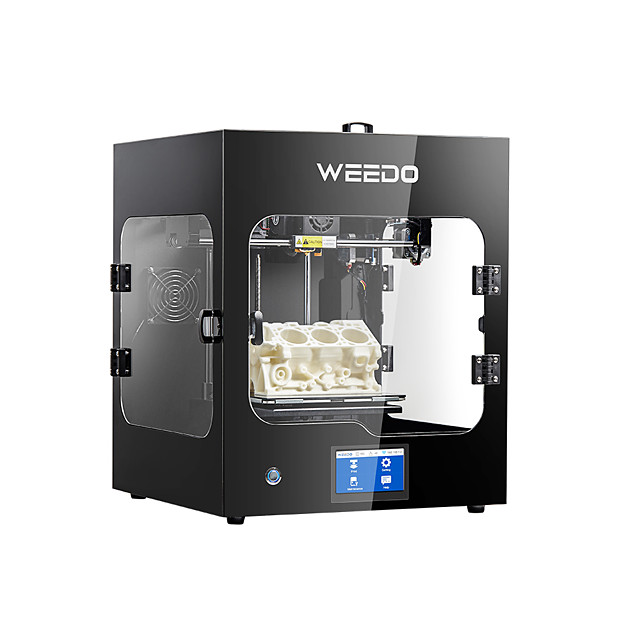 Modix continues its path to market leadership by integrating cutting edge technology while maintaining outstanding value for money.
Modix continues its path to market leadership by integrating cutting edge technology while maintaining outstanding value for money.
Generation 4 upgrades the Modix offering with new features such as printing models with internal geometry, faster print speeds, faster post-processing times and higher reliability.
Learn more about the fourth generation of Modix - click here.
IDEX allows you to print models with internal geometry, provides high quality surface finish while reducing post-processing time.
View details
The Griffin printhead delivers high print quality, impact resistance, easy replacement and higher print temperatures than ever before.
Learn more
A set of reliability sensors designed to save time on print jobs. It can detect filament runout, under extrusion and clogging.
Learn more
Full set of automatic calibration tools including: bed tilt calibration, bed leveling, gantry leveling and z-offset calibration.
Learn more
Don't limit future ideas, get a bigger printer today!
For more information about our large 3D printer technology, please CLICK HERE
IDEX
Double independent extruders
touch screen
7-inch touch screen and web interface for remote monitoring
Duet Controller
Improved Electronics with a control web 9000 9000 9000 9000 your health with a set of charcoal and HEPA filters.
(Optional)
Shielded wires
IGUS signal cables for greater reliability.
Magnetic bed
Easily remove printed objects when finished.
(Optional).
Fault Detector
Detect hardware failures and prevent failures.
High Quality
One of the most significant benefits of Modix large-scale 3D printers are carefully selected premium components, each of which contributes to high quality printing. These components include: Bondtech Extruder (Sweden Made), E3D Nozzles (UK Made), DUET3D Controller (UK Made), Trinamic Motor Drivers (German Made), IGUS Shielded Signal and Power Wires (German Made), Alcoa Cast Aluminum Plate Mic-6 (made in USA), Meanwell power supply (made in Taiwan) and more.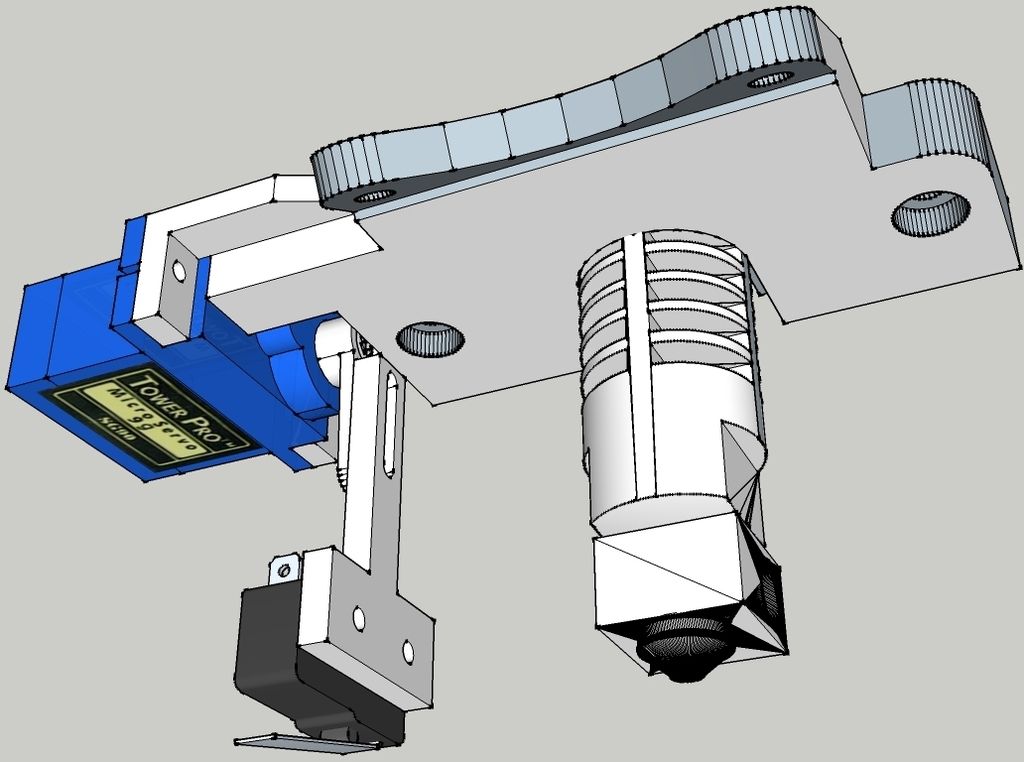 Nearly every component in our large format 3D printers contributes to print quality and reliability, which is why we choose the highest component standards, even for the smallest parts, such as aircraft grade power adapters, durable castors, fiberglass reinforced belts, etc.
Nearly every component in our large format 3D printers contributes to print quality and reliability, which is why we choose the highest component standards, even for the smallest parts, such as aircraft grade power adapters, durable castors, fiberglass reinforced belts, etc.
Heavy Duty
A key design factor in our large scale printers is the heavy duty design. Because our large format 3D printers are supplied as DIY kits, we place great emphasis on ensuring that the end user achieves the highest levels of accuracy and consistent calibration. This includes a very detailed online build guide with 3D models that can be rotated and scaled, several detailed video tutorials for each step, and more. In addition, we provide our clients with calibration methods and tools that help make this process as successful and as smooth as possible.
IDEX Dual Extrusion
IDEX's dual print head technology allows internal geometry to be printed using a dissolvable support filament.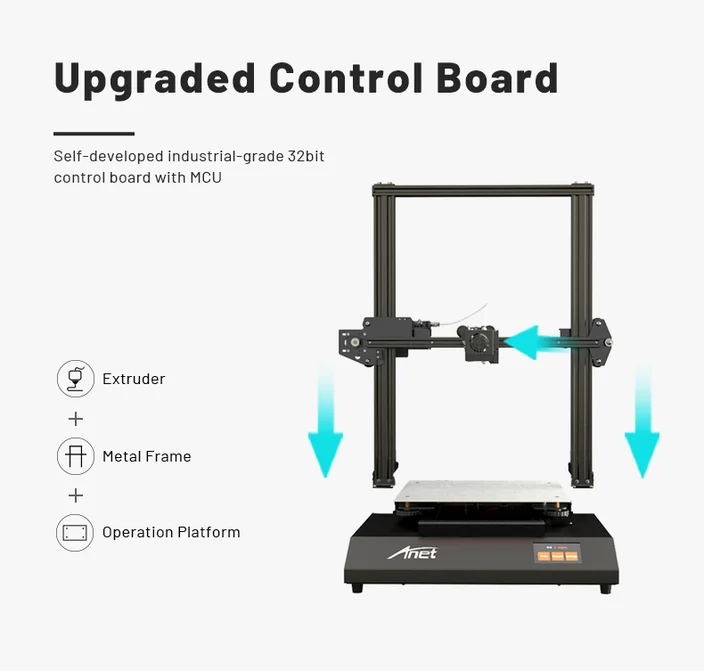 Once completed, you can dissolve the support material and enjoy high-quality results without the tedious manual removal of the support. With tear-off support, you can quickly remove the support immediately after printing is complete. In addition, you can enjoy the smooth surface of the bottom surfaces. With a secondary support thread, you can maintain zero distance between dense support layers and the model itself, so the surface will be much smoother than when printing support from the same material.
Once completed, you can dissolve the support material and enjoy high-quality results without the tedious manual removal of the support. With tear-off support, you can quickly remove the support immediately after printing is complete. In addition, you can enjoy the smooth surface of the bottom surfaces. With a secondary support thread, you can maintain zero distance between dense support layers and the model itself, so the surface will be much smoother than when printing support from the same material.
Customizable Platform
Modularity is our flagship concept. In fact, the Modix brand is called "modular technology". At Modix, we're constantly making new optional add-ons available to easily add to your printer, including air filters, multiple printhead configurations, and more. There are several additional setup guides on our customer's online services portal.
Wide Choice
Our Griffin printhead offers a wide range of nozzle and heater block configurations.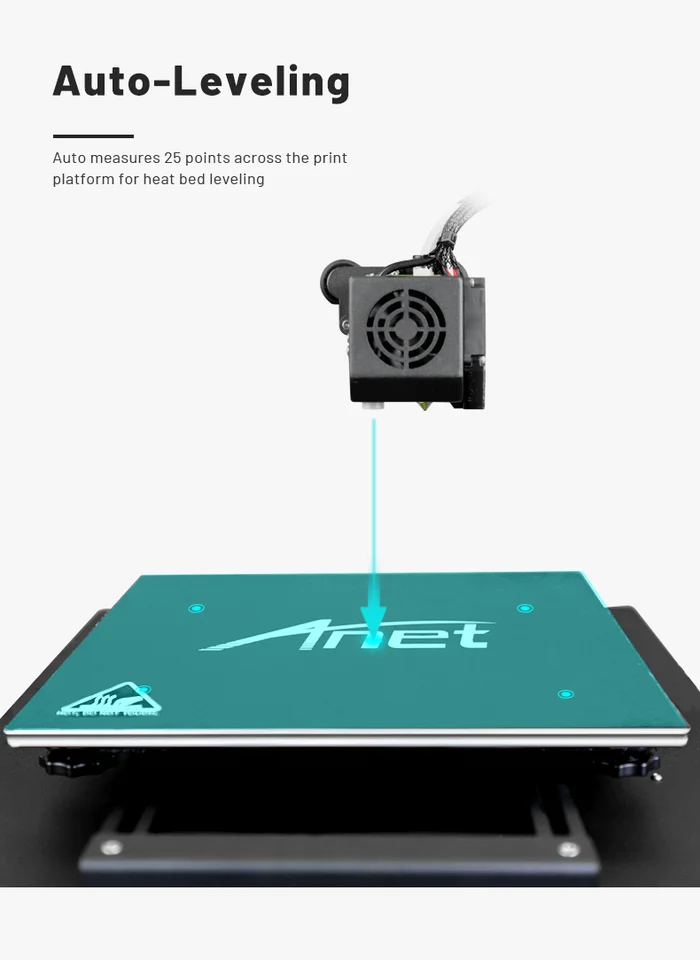 Modix offers three heat block sizes: the default high performance Griffin hot end, the short E3D-V6 hot end for detailed fine prints, and the E3D Super Volcano for rough and fast 3D projects. Each of the thermoblocks has several options for nozzles, some of them are offered as part of our set. Other materials can be purchased directly from the E3D online store, such as high-quality hardened steel nozzles that can print with abrasive filaments (such as filament containing carbon fiber).
Modix offers three heat block sizes: the default high performance Griffin hot end, the short E3D-V6 hot end for detailed fine prints, and the E3D Super Volcano for rough and fast 3D projects. Each of the thermoblocks has several options for nozzles, some of them are offered as part of our set. Other materials can be purchased directly from the E3D online store, such as high-quality hardened steel nozzles that can print with abrasive filaments (such as filament containing carbon fiber).
Open Architecture
Our clients are not locked out! Modix believes in freedom of choice, especially for passionate innovators. Users can select filament from any source and use a variety of modeling and slicing software solutions to suit their needs. We recommend the Simplify3D slicing software, but recognize that users may have other software preferences such as Cura and Slic3r. They also work great and are compatible with our larger 3D printers. Our customers are provided with print profiles for each of these slicing software packages.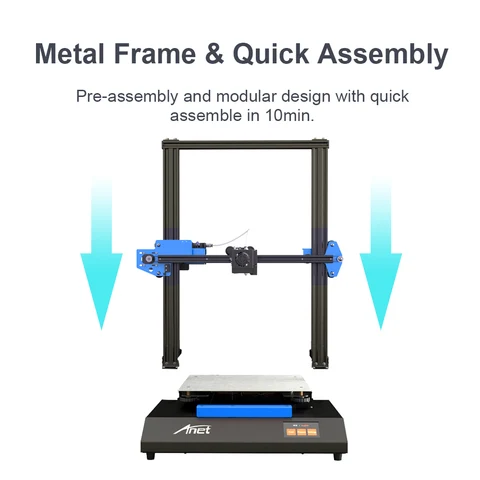
Self Assembly
Self assembly is the preferred method of purchasing a 3D printer for many professionals for several reasons. Practical approach - you build your own machine to better understand the motion system, print head and calibration. You will gain invaluable insight into how to maintain your printer and how to upgrade it in the future. Just like your PC's operating system, Modix large format 3D printers are specifically designed to be customized and adapted to your specific needs.
Future Ready
We are constantly developing and innovating, so when you buy a Modix 3D printer, you are actually investing in a platform that can be upgraded from time to time. Owners of earlier versions are now offered the benefits of our latest version (Generation 4.0). This alone improves the long-term sustainable use of the printer and increases your return on investment.
Large Benefits of 3D Printer
Experienced 3D printer users who already own one or more small desktop 3D printers and are now looking to expand their printing capabilities should consider the following unique advantages of large format 3D printers:
1.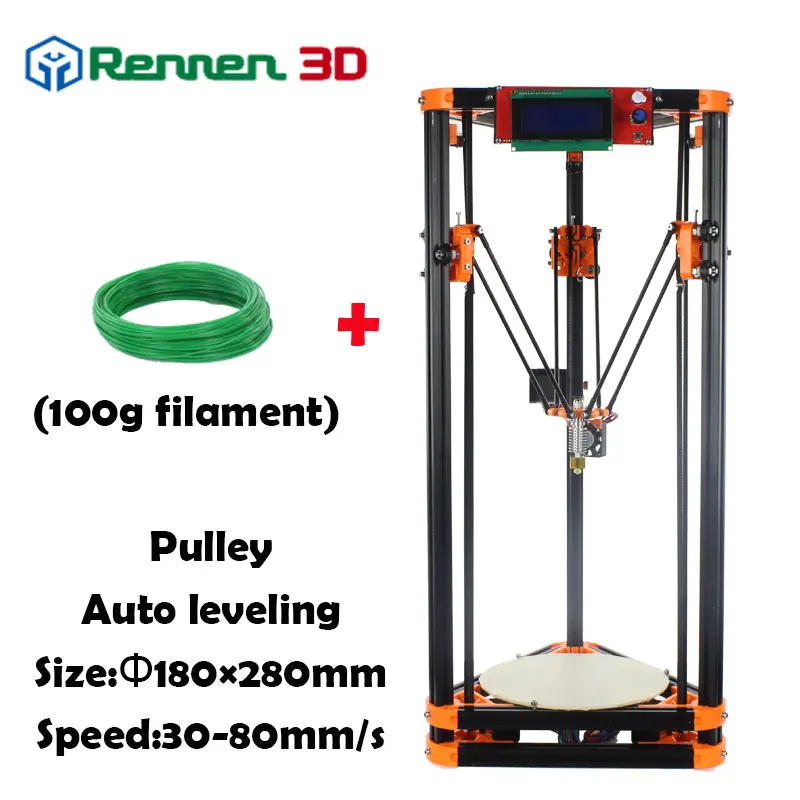 Printing large, one-piece 3D models makes them stronger.
Printing large, one-piece 3D models makes them stronger.
2. Printing models as one part also saves post-processing time. There is no need to fit smaller pieces together or try to hide a seam.
3. Another unique advantage of the large printbeds is the fact that you can print multiple small items in one batch. Batch production can be set up to complete one object before starting another ("sequential printing") for greater reliability.
Premium Support since 2015
Modix prides itself on its prompt and professional support!
We believe that any product is only as good as its service, and since the beginning in 2015 we have worked hard to maintain this concept. If received, help requests are cleared daily. If necessary, videoconferencing sessions are scheduled to better understand the ground situation. This saves time both in understanding the problem and in quickly finding a solution.
Reviews
Mr. Brian Grimm
Engineering Garage USA
BIG-60 B3
Mr.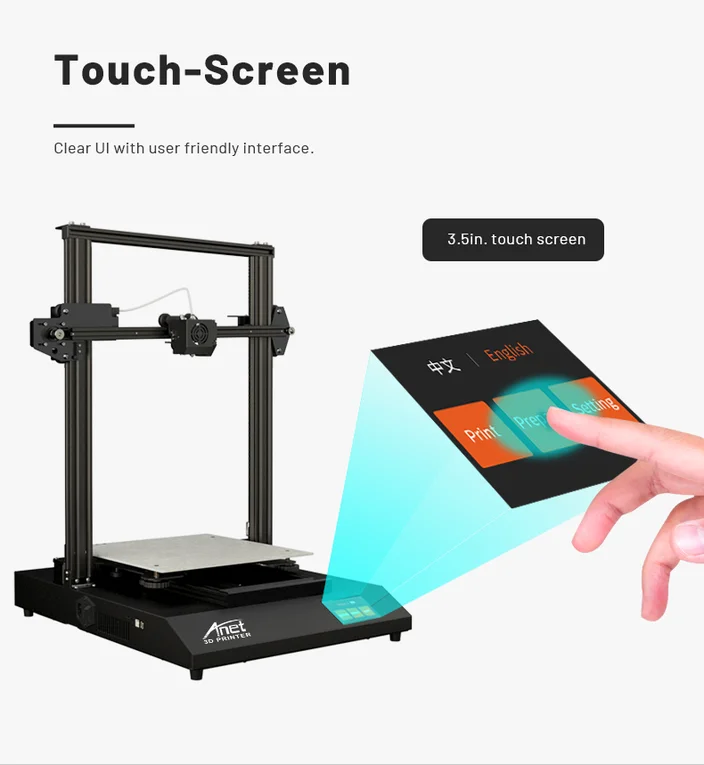 James Lowick
James Lowick
Australia
BIG-60 B3
MR. Jeff Raymond
Real Martian USA
BIG-120V3
Frank 3D Print
Lab USA
BIG-60 V3 (Open Mode)
Use Cases
Canon Restoration 1.6 meters
Made in Ireland
Robot housing parts
Made in Germany
Motorcycle engine cover
Made in Czech Republic
Bronze cast
Made in Turkey
Goodyear Farm Tire
Made in USA
Cutter cover
Made in Israel
PCB maker
Made in France
Prosthesis cover for high legs
Made in Portugal
Trusted By
Aerospace
Automotive
Protection
Production
Production
Educational
Get an overview of our new product:
The product overview includes a detailed technical review, updated specifications, and answers to frequently asked questions, including how to print at high temperature, software comparability, and more.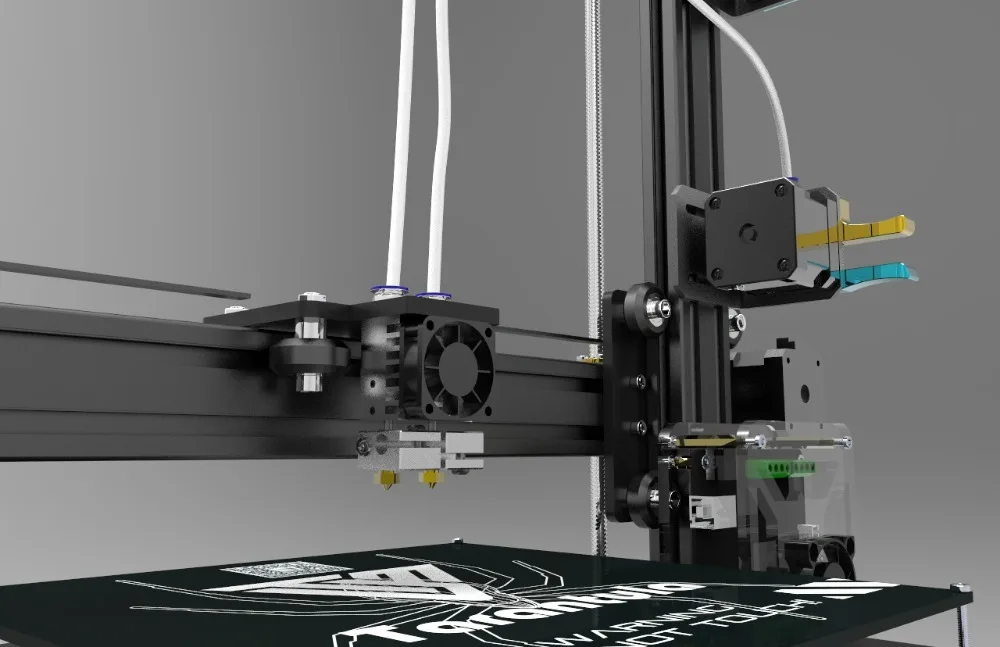
Best 3D Printers under $1000 in 2020
Best Windows Central 3D Printers 2020 under $1000
Over the past five years we have been investing in the world of 3D printing using as many printers as possible to see what good and what is bad. We all know printing can be expensive - there are machines that start at $3,000 and go from there - so we want you to have an idea of what you can get for less. When it comes to price and quality, you can't beat the Prusa i3 MK3. While it's not the cheapest of the machines on this list, it's simply the best quality in terms of build and print.
- Best overall: Prusa i3 MK3
- Best value: Creality Ender 3
- Best for your table: Monoprice Maker Mini Pro
- Best Price Delta: Monoprice Mini Delta
- Best value resin: AnyCubic Photon
Best overall:
Prusa i3 Mk3
In the world of 3D printing for hobbyists, there are few names like Josef Prusa. His work in open source 3D printing has revolutionized what can be done at home and on a budget for those who want to create stunning prints. The Prusa i3 MK3 is the latest machine based on an open source design and perhaps the most advanced printer on this list.
His work in open source 3D printing has revolutionized what can be done at home and on a budget for those who want to create stunning prints. The Prusa i3 MK3 is the latest machine based on an open source design and perhaps the most advanced printer on this list.
The Prusa has automatic bed leveling, making sure each print runs the best it can, but it also corrects the print on the fly if something happens to move the bed. With the help of a sensor in the extruder, Prusa can detect when you've run out of filament, pause your print, and alert you to refill, while saving you countless errors. From the removable bed, to the ability to easily remove prints without disturbing them, to the excellent retention feature that prevents prints from being lost when the power is turned off, Prusa goes out of its way to deliver on every print.
The listing is for the i3 mk3 kit version, so you will need to assemble it yourself. Prusa does offer a fully made one, but $200 more if you add extra shipping. Which one you buy will depend on your preferences, but we recommend purchasing a bundle. Plus, it's actually very interesting to learn how to create it from scratch.
Which one you buy will depend on your preferences, but we recommend purchasing a bundle. Plus, it's actually very interesting to learn how to create it from scratch.
Pros:
- Auto bed leveling
- Excellent print quality
- Open source
- Active community
- Save functionality
Cons:
- Cheaper to buy a kit
Best overall
Prusa i3 MK3
Fantastic quality
If you're just getting into 3D printing and want to start with the best, then go for the Prusa MK3.
- $750+ at Prusa Research
Best value:
Creality Ender 3
Creality Ender 3 is a prime example of how a community can come together, take something cheap and flawed and turn it into something special. The Ender 3 is not a printer for those who want quality prints right out of the box - they have to be earned. Sure, it's easy to set up, and it doesn't take much else to assemble - just a few screws - but it does take some effort to get a print you can be proud of.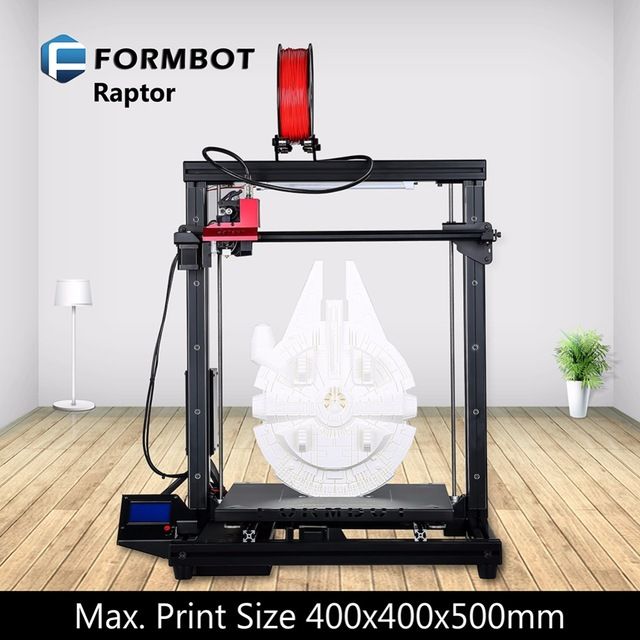
Ender 3, while cheap, is not well tuned by Creality. The extruder setting is poor, as are many acceleration settings, and may require endless fine-tuning because of this. Don't be embarrassed though, there are people who are willing to help put you on the right track.
I would never have gotten the Ender 3 to usability without the help of the Facebook and Twitter 3D printing communities, and I urge you to look into these places if you are considering buying an Ender 3. In particular, check out the Filament Frenzy on Twitter. It might force Ender 3 sing and dance like magic.
Of course, if you have the time to spend on it, $220 for a full-size printer that can make fantastic prints is a bargain. If you have time to love it, this could be a great investment.
Pros:
- Very cheap
- Easy setting
- Can create amazing prints
Cons:
- Can take a lot of work to get a license
Best Value
Creality Ender 3
Community Favorite
Ender 3 can be a real pain to get right, but when you do, you can end up with some amazing prints. Don't forget to join some communities for help.
Don't forget to join some communities for help.
- $230 at Amazon
Best for your table:
Monoprice Maker Mini Pro
If you're completely new to 3D printing and want something simple, reliable, and cheap, you can't do better than Monoprice's Maker Mini Pro. The printer itself is small enough and quiet enough to sit on your office desk and let you do small, fun little projects pretty quickly. The Mini has some high-end features like Wi-Fi connectivity as well as an SD card and direct PC connection that you usually get with larger printers.
It even comes with automatic bed leveling which can be picky but is a great addition. There's also a heated print bed with multiple filament types, as you'd expect on a more expensive printer, wrapped in a sturdy metal casing that reduces the "noise" often associated with cheaper printers. With a 4.75-inch printable mattress, the Mini is the smallest of the printers on this list, but if you're just getting into 3D printing and just want to experiment, a small bed is more than enough.
With the Bowden extruder setup already part of the Mini, the print results are far better than I ever thought a $200 printer would produce. I helped my local youth room get three of these so the young people there can learn how to design and print in 3D, and so far the only issues I've had are a blocked nozzle and an uneven print bed, both of which are major drawbacks. 3D printed and easily fixed by anyone.
Pros:
- Auto bed leveling
- Fits on your desk
- Wi-Fi printing
- Heated bed
Cons:
- Printed bed really small
Best for your desk
Monoprice Maker Mini Pro
Tiny Desktop Print
Sometimes you just want to have some fun at your desk. The Mini Pro is ideal for desktop 3D printing.
- $200 at Amazon
Best Price
Delta: Monoprice Mini Delta
When I first used the Mini Delta, I was willing to write it off from the get go - $160 for a delta printer? It was obvious to suck.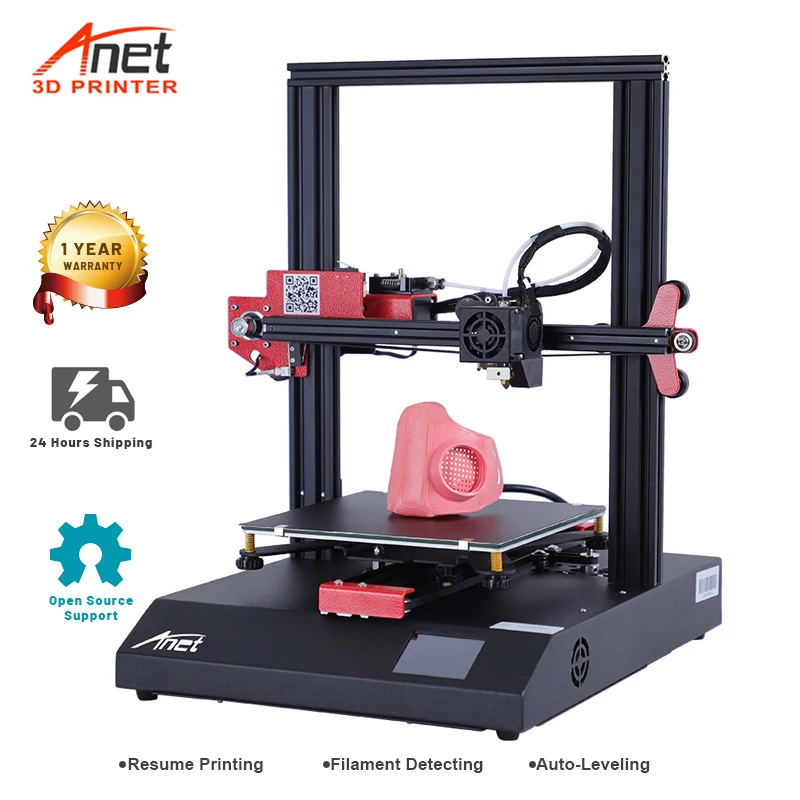 It turns out I was wrong. I like the Delta for many reasons, including portability, build quality, and excellent print quality. All these things are not as good as the price. For just $160, you can get your own 3D printer that will work right out of the box.
It turns out I was wrong. I like the Delta for many reasons, including portability, build quality, and excellent print quality. All these things are not as good as the price. For just $160, you can get your own 3D printer that will work right out of the box.
The Mini Delta's interface is incredibly simple, making it ideal for young people and beginners who aren't interested in taking things apart to make them work. The printer has three buttons, each of which is self-explanatory, allowing you to start printing right away. The nature of delta printers - delta printers use three constantly moving servos instead of rods and screws - means this mini model is reliable, even when pushed around. Delta, once typed, will give you excellent prints even in the worst of circumstances.
I was amazed at the print quality of this little machine, and although it can only make very small models, it remains one of my favorites to have around for small, quick jobs. The only problem I sometimes run into is that auto leveling is sometimes a little off and you will need to manually adjust or use a product like Magigoo to keep it from freezing.
Pros:
- Rock hard
- Excellent print quality
- Simple interface
- portable
Cons:
- Small
- Bed alignment is jerky
Best Value Delta
Monoprice Mini Delta
Mini Reliability
Mini Delta is an amazing little machine with some advanced features. Print quality is excellent and portability is excellent.
- $160 at Amazon
Best Cost Resin:
AnyCubic Photon
Printing on resin can be expensive. The machines themselves are usually expensive, and the resins can be even more expensive. Resin printing differs from the other printers on this list in that it uses liquid plastic that is cured under UV light or removed with a laser. It can be messy, tricky, and a little dangerous, so it's best to know what you want before you buy.
Somehow Anycubic made an inexpensive resin printer that produces some of the best quality prints I've seen on a $2000 printer. Resin prints are great and it's often impossible to tell they're 3D printed. They often look like cast models.
Resin prints are great and it's often impossible to tell they're 3D printed. They often look like cast models.
Using Chitubox, a slicer currently used by a large number of 3D printer manufacturers, to slice models is simple and efficient and makes the whole process of printing models on Photon a breeze. One word of caution: make sure your supports are thick in the Chitubox, as they can be a little on the weak side if you're not careful.
Of all the resin printers that I have owned and used Photon, I recommend it to friends, and therefore to you, dear readers. It's reliable and accurate every time.
Pros:
- Entry price
- Almost invisible layer lines
- Easy to use
- Excellent cut
Cons:
- Small build
- Chitubox can be tricky
Best value resin
AnyCubic Photon
Resin printing is amazing
This is one of my favorite printers and it's so cheap it's worth buying two just for fun.


